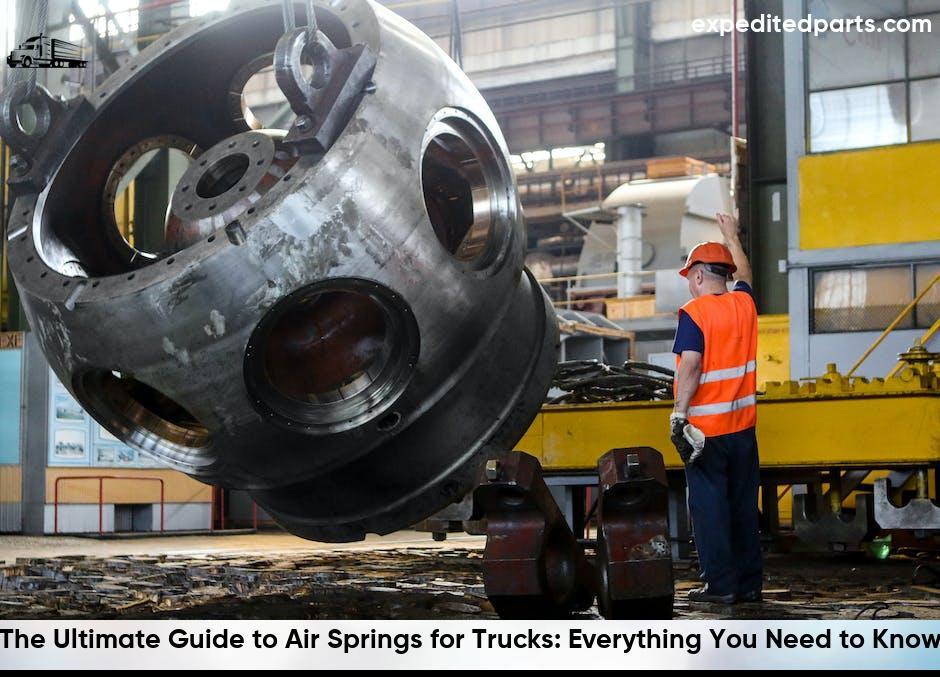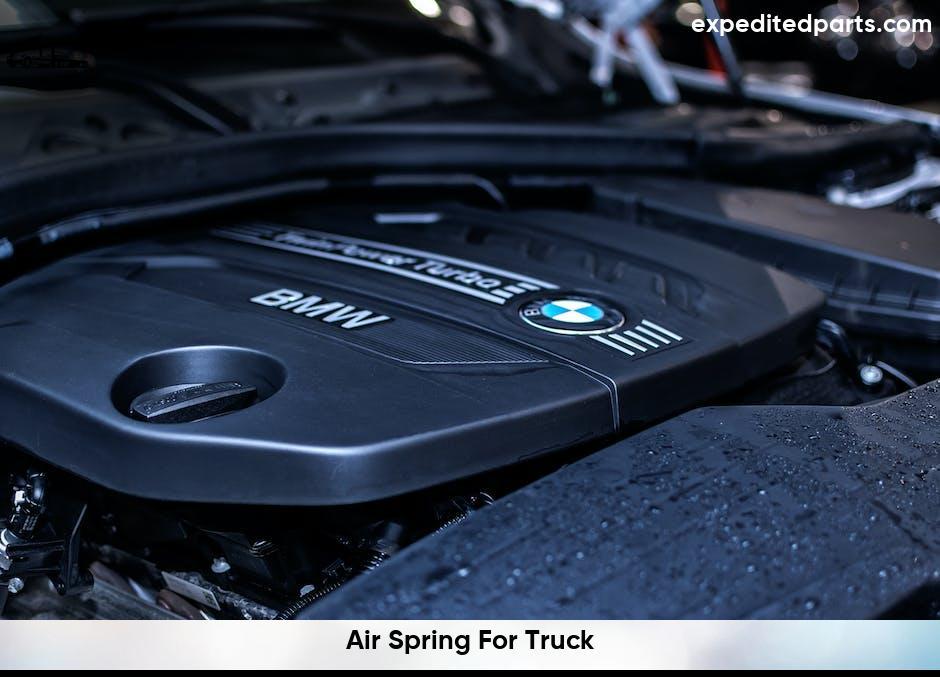Upgrade your truck’s suspension with an air spring! Enjoy a smoother ride, improved handling, and enhanced load-carrying capacity.
An air spring for trucks is a crucial component that plays a significant role in the suspension system of heavy-duty vehicles. Designed to support the weight of the truck, air springs provide a smoother and more comfortable ride by absorbing shocks and vibrations caused by uneven road surfaces. These springs consist of a flexible rubber bladder filled with compressed air, which allows for adjustable suspension stiffness and height. With the ability to distribute weight evenly, air springs improve stability and control, enhancing overall vehicle performance and safety. Whether used in commercial trucks or recreational vehicles, air springs are an essential part of ensuring a smooth and stable ride for both drivers and passengers.

The Ultimate Guide to Air Springs for Trucks: Everything You Need to Know
- What are air springs and how do they work?
- The benefits of using air springs in trucks
- Different types of air springs available
- How to choose the right air springs for your truck
- Installation and maintenance tips for air springs
- Common troubleshooting issues and how to resolve them
By the end of this guide, you’ll have a clear understanding of air springs and their importance for optimizing your truck’s performance. Whether you’re a truck enthusiast or a professional driver, this knowledge will empower you to make informed decisions when it comes to upgrading or maintaining your truck’s suspension system.
How Air Springs Improve Truck Performance: A Comprehensive Analysis
- The role of air springs in improving ride quality
- Enhancing stability and control with air springs
- Reducing wear and tear on other components
- Increasing payload capacity and towing capabilities
- Improving fuel efficiency with optimized aerodynamics
- The impact of air springs on driver comfort and safety
So, let’s dive into the world of air springs and discover how they can take your truck to new heights!
10 Benefits of Using Air Springs for Trucks: Boosting Efficiency and Comfort
- Improved fuel efficiency: Air springs help reduce the overall weight of the truck, leading to decreased fuel consumption.
- Enhanced ride quality: These springs provide a smoother and more comfortable ride by absorbing road vibrations and minimizing jolts.
- Increased stability: Air springs help in maintaining proper alignment and balance, resulting in better handling and stability on the road.
- Easy height adjustment: With air springs, trucks can easily adjust their ride height, allowing for better ground clearance in off-road conditions or loading and unloading operations.
- Reduced wear and tear: By absorbing shocks and vibrations, air springs minimize strain on various truck components, resulting in reduced maintenance costs and longer lifespan.
- Improved load-carrying capacity: Air springs can bear heavier loads compared to traditional suspensions, making them ideal for commercial trucks and heavy-duty applications.
- Quick and easy installation: Air springs can be easily installed and replaced, saving time and reducing downtime for trucks.
- Enhanced driver comfort: The improved ride quality provided by air springs reduces driver fatigue and increases overall comfort during long hauls.
Advancements in air springs technology have revolutionized the truck suspension industry, paving the way for a more efficient and comfortable future. The continuous development and innovation in air springs have led to several significant improvements and benefits.
Air springs offer a wide range of advantages, including:
- Improved load-carrying capacity: Advanced air springs have higher load-bearing capabilities, allowing trucks to transport heavier loads, increasing productivity and efficiency.
- Dynamic height control: Cutting-edge air springs feature intelligent height control systems that automatically adjust the ride height based on driving conditions, optimizing performance and stability.
- Enhanced durability: The latest air springs are designed to withstand harsh operating conditions, minimizing wear and tear, and reducing maintenance costs.
- Optimized fuel efficiency: Advanced air springs are lightweight, contributing to reduced fuel consumption and lower carbon emissions.
- Intelligent damping systems: Innovations in air springs technology incorporate intelligent damping systems that provide precise control over the suspension, ensuring a smooth and comfortable ride.
- Improved safety: The advancements in air springs technology result in better handling and stability, enhancing truck safety and reducing the risk of accidents.
- Integration with vehicle systems: Air springs can be seamlessly integrated with other vehicle systems, such as electronic stability control and adaptive cruise control, further enhancing performance and safety.
- Reduced maintenance: The enhanced durability and reliability of advanced air springs lead to reduced maintenance needs, minimizing downtime and increasing truck availability.
- Customization options: The future of air springs allows for greater customization, enabling truck owners to tailor the suspension to their specific needs and preferences.
Air Springs vs. Traditional Suspension: Which is Better for Trucks?
When it comes to trucks, choosing between air springs and traditional suspension systems can have a significant impact on the overall performance and comfort of the vehicle. Let’s compare the two options to determine which one is better suited for trucks.
| Factors | Air Springs | Traditional Suspension |
|---|---|---|
| Load-Carrying Capacity | High | Lower |
| Ride Comfort | Good | |
| Adjustability | Highly adjustable | Less adjustable |
| Leveling Ability | Easy to level | Requires additional mechanisms |
| Handling and Stability | Good | |
| Maintenance | Regular inspection and occasional replacement | Regular maintenance |
Additionally, air springs are highly adjustable, allowing drivers to personalize the suspension settings based on their preferences and load requirements. They also provide easy leveling capabilities, making it simple to maintain proper ride height even when the truck is loaded unevenly.
When it comes to maintenance, air springs require regular inspections and occasional replacement when needed. On the other hand, traditional suspension systems typically involve more frequent maintenance tasks.


